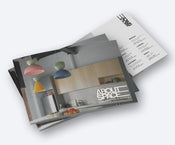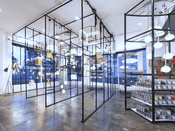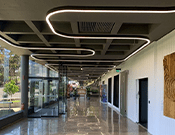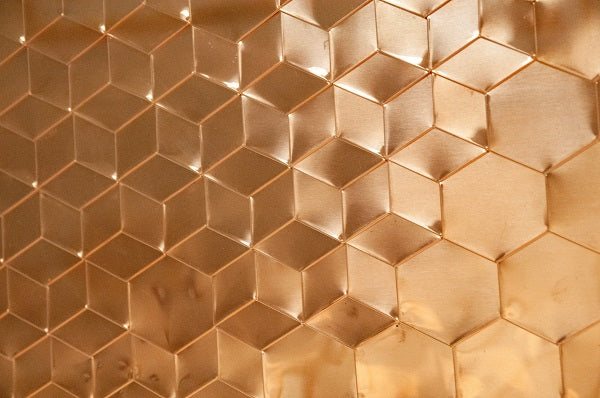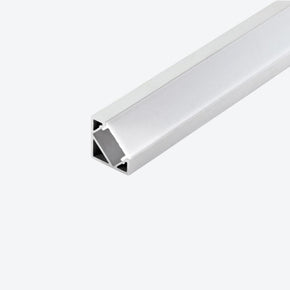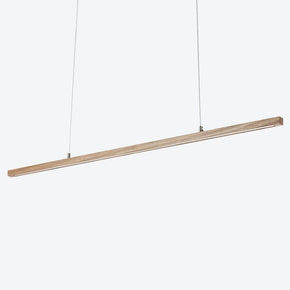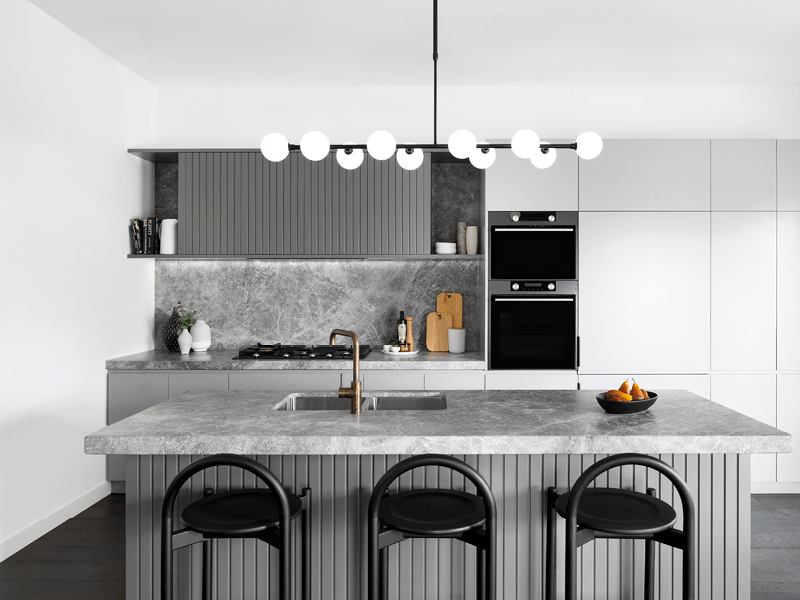- No products in the cart.
- ``
Working with metal: how does it work?
15
Apr
We often get asked about the materials we use for our products and the techniques we use for applying coloured coating to our lighting fixtures. The materials vary, as do our methods. While all our profile lights are made from aluminium, our hoop pendants use a physical vapour deposition (PVD) process and our marquee pendants are powder coated. The techniques we use will depend largely on the material we’re coating. Read on to learn more about the materials we use and some of the most common coating methods.
Electroplating
Electroplating involves passing an electric current through a solution called an electrolyte. This is done by dipping two terminals called electrodes into the electrolyte and connecting them into a circuit with a battery or other power supply. The electrodes and electrolyte are made from carefully chosen elements or compounds. When the electricity flows through the circuit they make, the electrolyte splits and some of the metal atoms it contains are deposited in a thin layer on top of one of the electrodes - it becomes electroplated. All kinds of metals can be plated in this way, including gold, silver, tin, zinc, copper, cadmium, chromium, nickel, platinum and lead.
PVD Coating
PVD stands for “Physical Vapor Deposition” and refers to a variety of thin film deposition techniques where a solid material is vaporized in a vacuum environment and deposited on substrates as a pure material or alloy composition coating. PVD is a super-hard coating that is by far the most durable coating available today.
Anodizing
Anodizing is an electrochemical process that converts the metal surface into a decorative, durable, corrosion-resistant, anodic oxide finish. Aluminium is ideally suited to anodizing, although other nonferrous metals, such as magnesium and titanium, can also be anodized.
The anodic oxide structure originates from the aluminium substrate and is composed entirely of aluminium oxide. This aluminium oxide is fully integrated with the underlying aluminium substrate, so it can’t chip or peel. It has a highly ordered, porous structure that allows for secondary processes such as colouring and sealing.
Anodizing is accomplished by immersing the aluminium into an acid electrolyte bath and passing an electric current through the medium.
Powder Coating
Powder coating is applied as a free-flowing, dry powder. Unlike conventional liquid paint, which is delivered via an evaporating solvent, powder coating is typically applied electrostatically and then cured under heat. The powder may be a thermoplastic or a thermoset polymer. It is usually used to create a hard finish that is tougher than conventional paint.
Most powder coatings have a particle size in the range of 2 to 50 μ (Microns) with a melting temperature around 150 °C, and are cured at around 200 °C. for a minimum of 10 to 15 minutes.
Removal of impurities like oil, dirt, lubrication greases, metal oxides and welding scale is an essential step before the powder coating can be applied. This can be done by a variety of chemical and mechanical methods. The selection of the method depends on the size and the material of the part to be powder coated, the type of impurities to be removed and the performance requirement of the finished product.
MDF
Medium-density fibreboard (MDF) is an engineered wood product made by breaking down hardwood or softwood residuals into wood fibres, combining it with wax and a resin binder, and forming panels by applying high temperature and pressure.
Mild steel
Mild steel is made in a similar fashion to how other carbon steels are made. A common method involves a combination of iron ore and coal. Once the coal and iron ore are extracted from the earth, they are melted together in a blast furnace.
Aluminium
The metallic element aluminium is the third most plentiful element in the Earth's crust. It’s lightweight, strong, non-magnetic, and non-toxic. It conducts heat and electricity and reflects heat and light. It is strong but easily workable, and it retains its strength under extreme cold without becoming brittle. The surface of aluminium quickly oxidizes to form an invisible barrier to corrosion. Furthermore, aluminium can easily and economically be recycled into new products.
Copper, Bronze and Brass
Pure copper is usually too soft for most uses. People first learned about 5,000 years ago that copper can be strengthened if it’s mixed with other metals. The two most familiar alloys of copper are bronze and brass. Bronze, the first alloy created by people, consists primarily of copper, commonly with about 12 to 12.5% tin and often with the addition of other metals, such as aluminium, manganese, nickel or zinc. Brass is an alloy of copper and zinc.
Stainless Steel
Stainless steel is a metal alloy, made up of steel mixed with elements such as chromium, nickel, molybdenum, silicon, aluminium, and carbon. Iron mixed with carbon to produce steel is the main component of stainless steel. Chromium is added to make it resistant to rust.
The team at About Space are experts in the design, creation and construction of various lighting solutions. If you have any questions about the materials we use, our techniques, or any of our products, please get in touch. We’d be happy to help.


